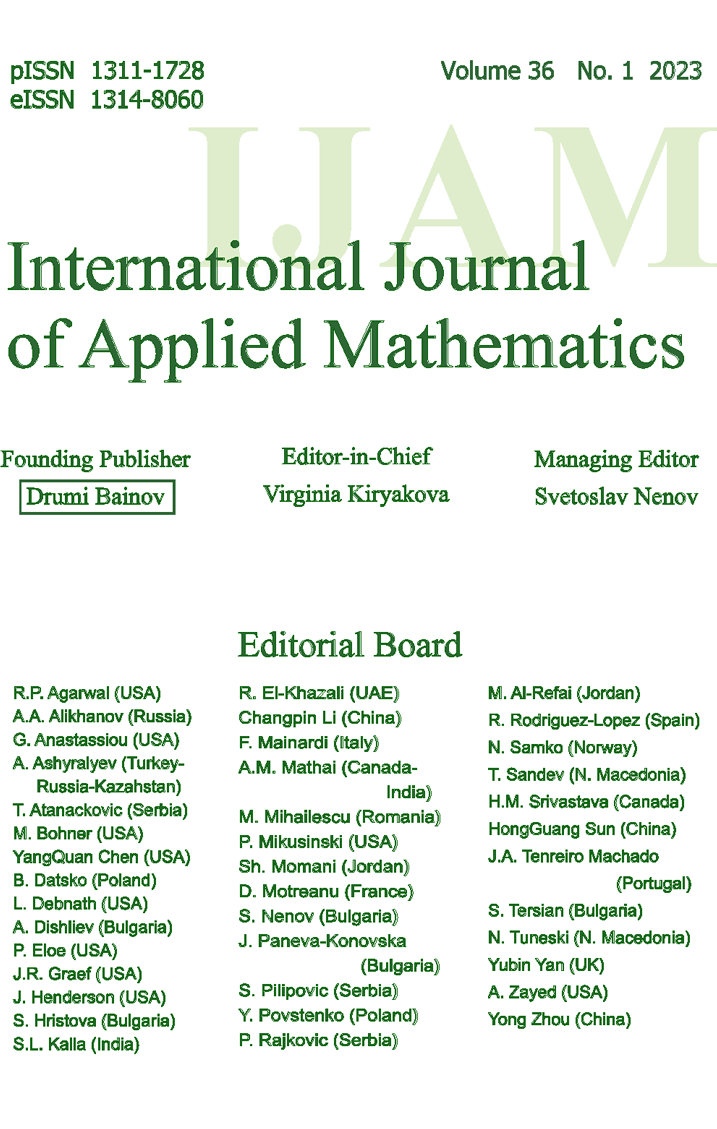QUALITATIVE ANALYSIS OF MESH REFINEMENT
METHODS ON NON-CONVEX DOMAINS
METHODS ON NON-CONVEX DOMAINS
Abstract
As many numeric simulations are mesh based approaches, a domain decomposition into triangular elements is a essential process in order to produce a good representation of the target domain. But, many methods were proposed and the commonly used approaches have different behaviors depending of the domain to mesh. Convex domains are easier to form good triangulations by most methods because of the well formed borders, but non-convex domains may be a problem to represent correctly. This paper performs a qualitative analysis of two known triangulation methods, the Ruppert and Force Balance refinement methods. We present some results of mesh refinement for non-convex domains by testing the minimal restriction angle.Citation details of the article
Journal: International Journal of Applied Mathematics
Journal ISSN (Print): ISSN 1311-1728
Journal ISSN (Electronic): ISSN 1314-8060
Volume: 29
Issue: 6
Year: 2016
DOI: 10.12732/ijam.v29i6.7
Download Section
Download the full text of article from here.
You will need Adobe Acrobat reader. For more information and free download of the reader, please follow this link.
References
- [1] L. P. Chew, Constrained delaunay triangulation, Algorithmica, 4 (1987), 97-108.
- [2] L. P. Chew, Guaranteed-quality triangular meshes, Cornell University, 4 (1989), 89–983, Technical Report.
- [3] L. P. Chew, Guaranteed-quality mesh generation for curved surfaces, Proc. of the Ninth Annual Symposium on Computational Geometry (1993), 274-280.
- [4] W. H. Frey, A new strategy for automatic node placement in graded triangular meshes, International J. of Numerical Methods in Engineering, 24 (1987), 2183–2200.
- [5] F. Hermeline, Triangulation d un poliedre en dimension n.r.a.i.r.o., Analyse Numérique, Numerical Analysis, 16, No 3 (1982), 211–242.
- [6] S. J. Owen, A survey of unstructured mesh generation technology, Proc. 7th International Meshing Roundtable in Applied Computational Geometry, 22, No 1-3 (1998), 239–267.
- [7] P. O. Persson and G. Strang, A simple mesh generator in Matlab, SIAM Review, 46 (2004), 329–345.
- [8] J. A. Ruppert, A new and sample algorithm for quality 2-dimensional mesh generation, Int. 4th ACM-SIAM Symposium on Discrete Algorithms (1993), 83–92.
- [9] J. A. Ruppert, A Delaunay refinement algorithm for quality 2-dimensional mesh generation, Journal of Algorithm, 18, No 3 (1995), 548–585.
- [10] J. R. Shewchuk, Triangle: Engineering a 2d quality mesh generator and Delaunay triangulator. Proc. 1st Workshop in Applied Computational Geometry (1996), 123–133.
- [11] J. R. Shewchuk, Delaunay Refinement Mesh Generation, PhD Thesis, School of Computer Science, Carnegie Mellon University, Pittsburgh (1997).

